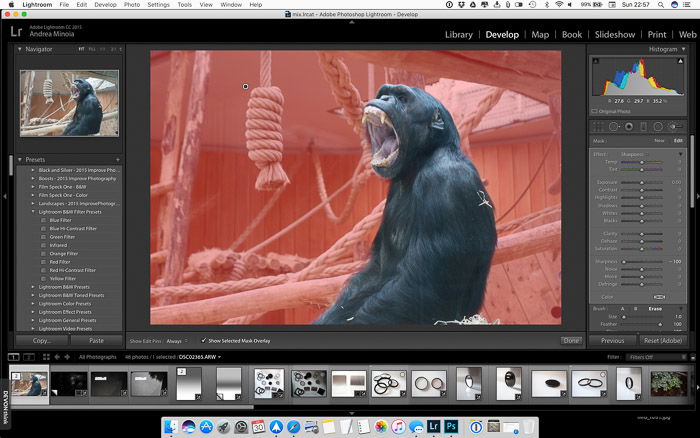

Reducing the Saturation would wash out most of the color in this image, because, aside from the yellow/oranges, the image doesn't have a lot of color. The reason to reduce the Vibrance instead of the Saturation is because Vibrance reduces the saturation of only the MOST saturatedcolor values, whereas Saturation reduces ALL of the color values. To solve this issue, reduce the Vibrance. Therefore, I ended up with a lot of yellow in the image: This is due to the fact that the highlights and shadows of the image were already quite warm, and boosting the contrast increases the range between highlights and shadows. In doing so for this example, the image became very warm. To restore a bit of the depth and edge definition that reducing the Clarity took away, we are now going to increase the contrast. Here is a comparison of how reducing the Clarity impacts an image:

Clarity impacts the midtones of an image, so when the Clarity is reduced significantly as in this example, you will see a drastic softening of your image: To soften the image, you will first need to reduce the Clarity. We are going to be working with Clarity, Contrast, and Vibrance:

Note: this can also be done in the Library Module, but you will have more control in the Develop Module. The first thing you need to do is open the Develop Module. While there are many different ways to achieve this sought-after look, one way that is quick and easy (and by quick, I mean you can do this in 30 seconds) is to reduce Clarity, boost Contrast, and reduce Vibrance. How to Make Photos Look Soft & Dreamy in LightroomĪre you wondering how you can achieve dreamy, soft edit in Lightroom? How to Sync Lightroom Presets from CC to Mobile How to Install Presets in the Free Lightroom Mobile App How to Sync Lightroom Presets from CC to Mobile.How to Install Presets in the Free Lightroom Mobile App.


 0 kommentar(er)
0 kommentar(er)
